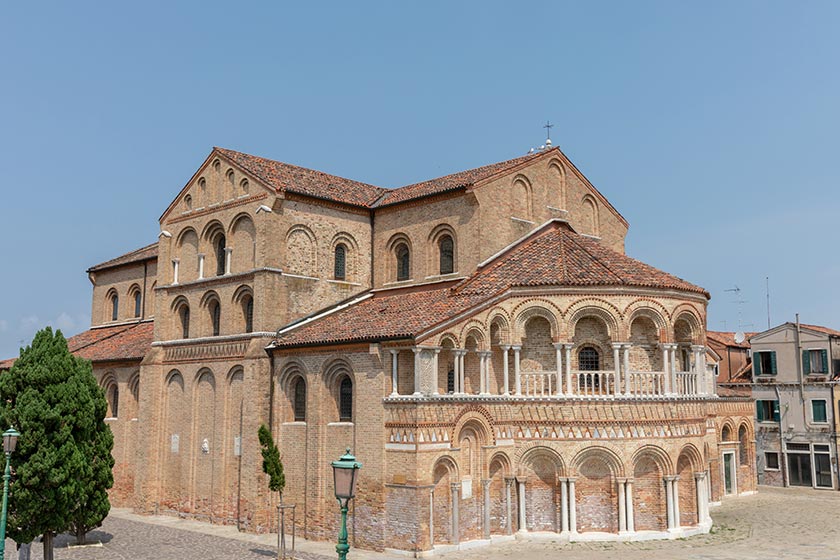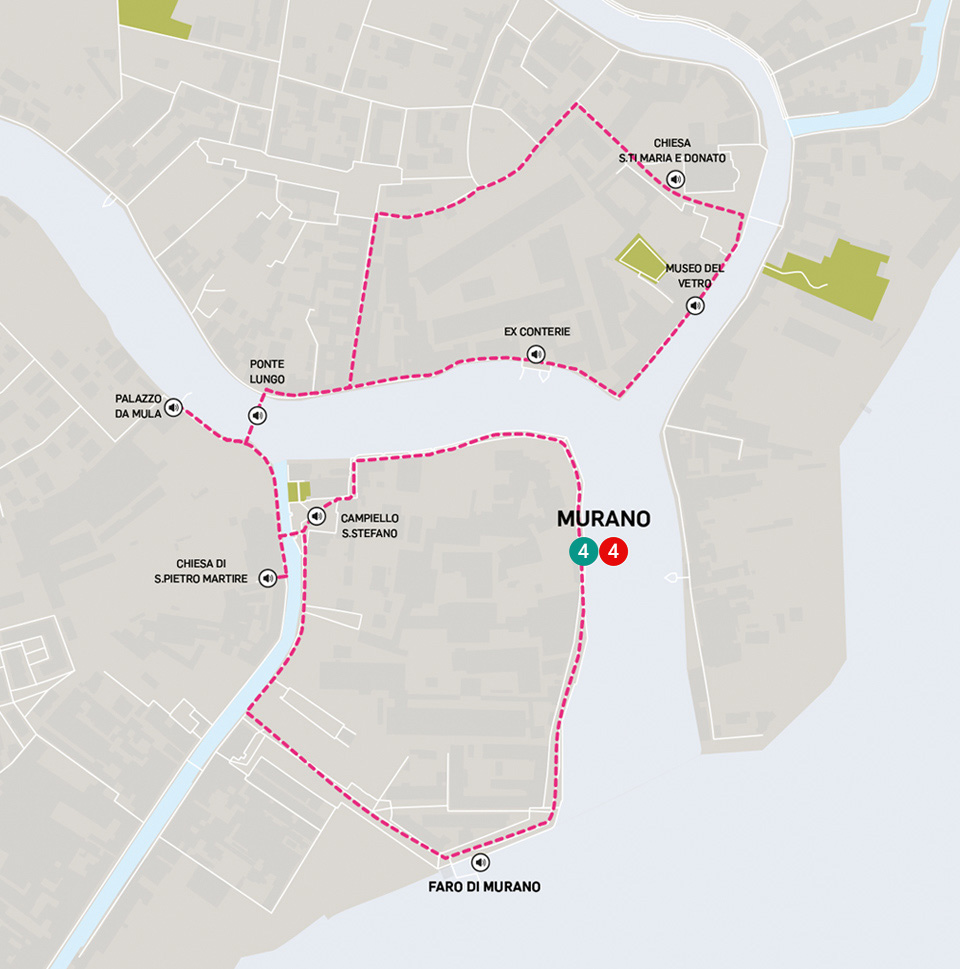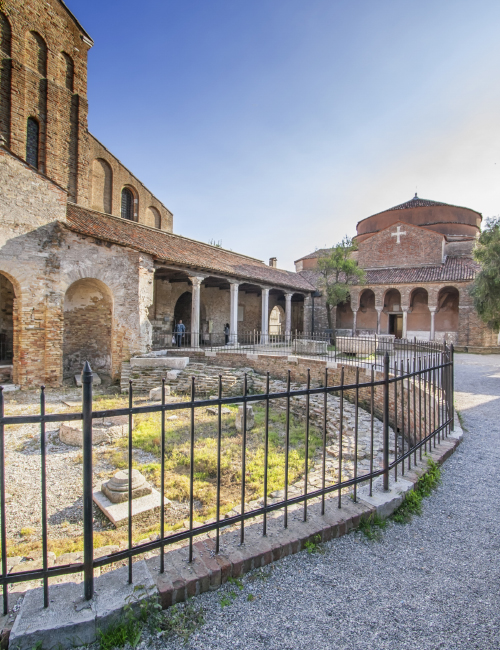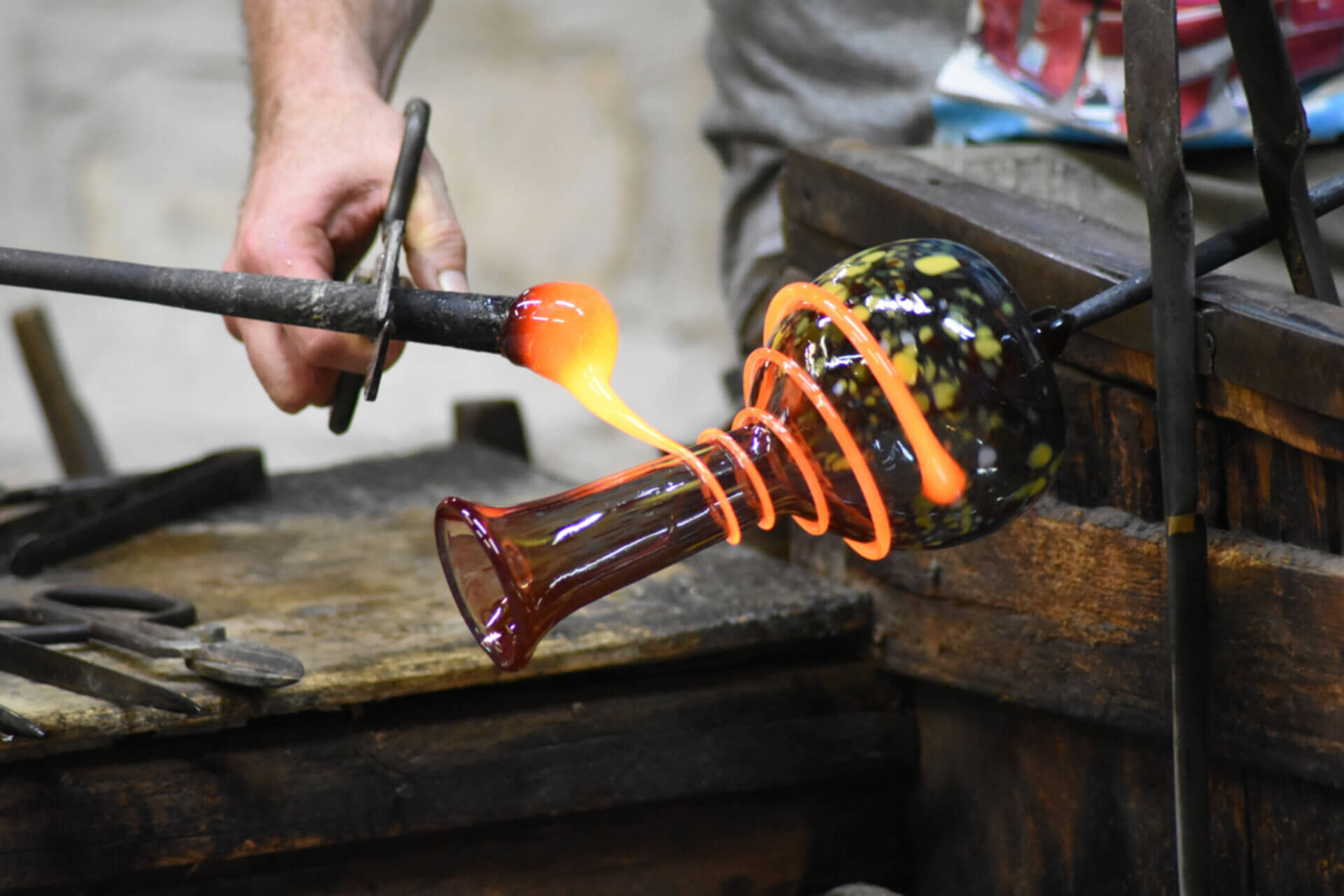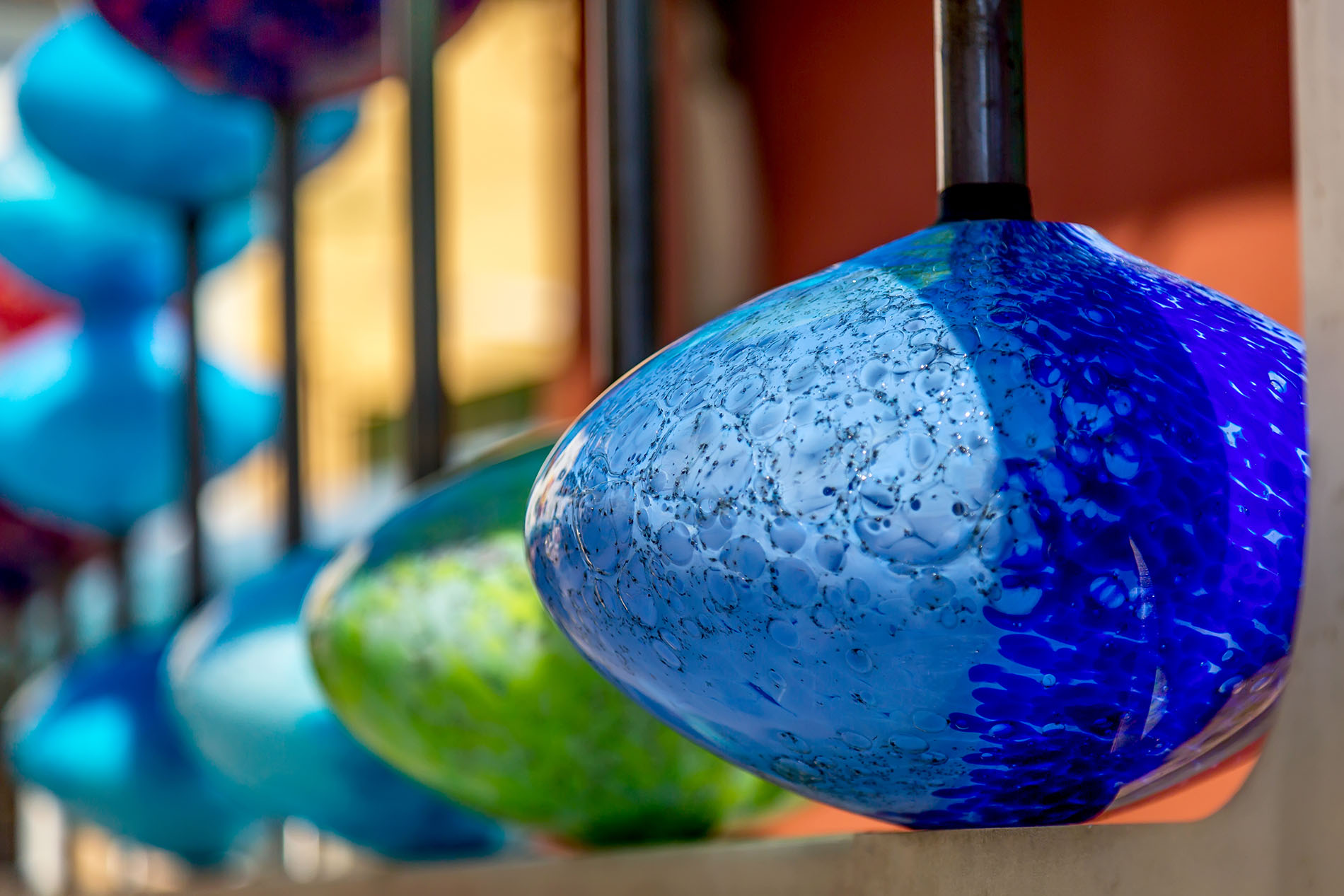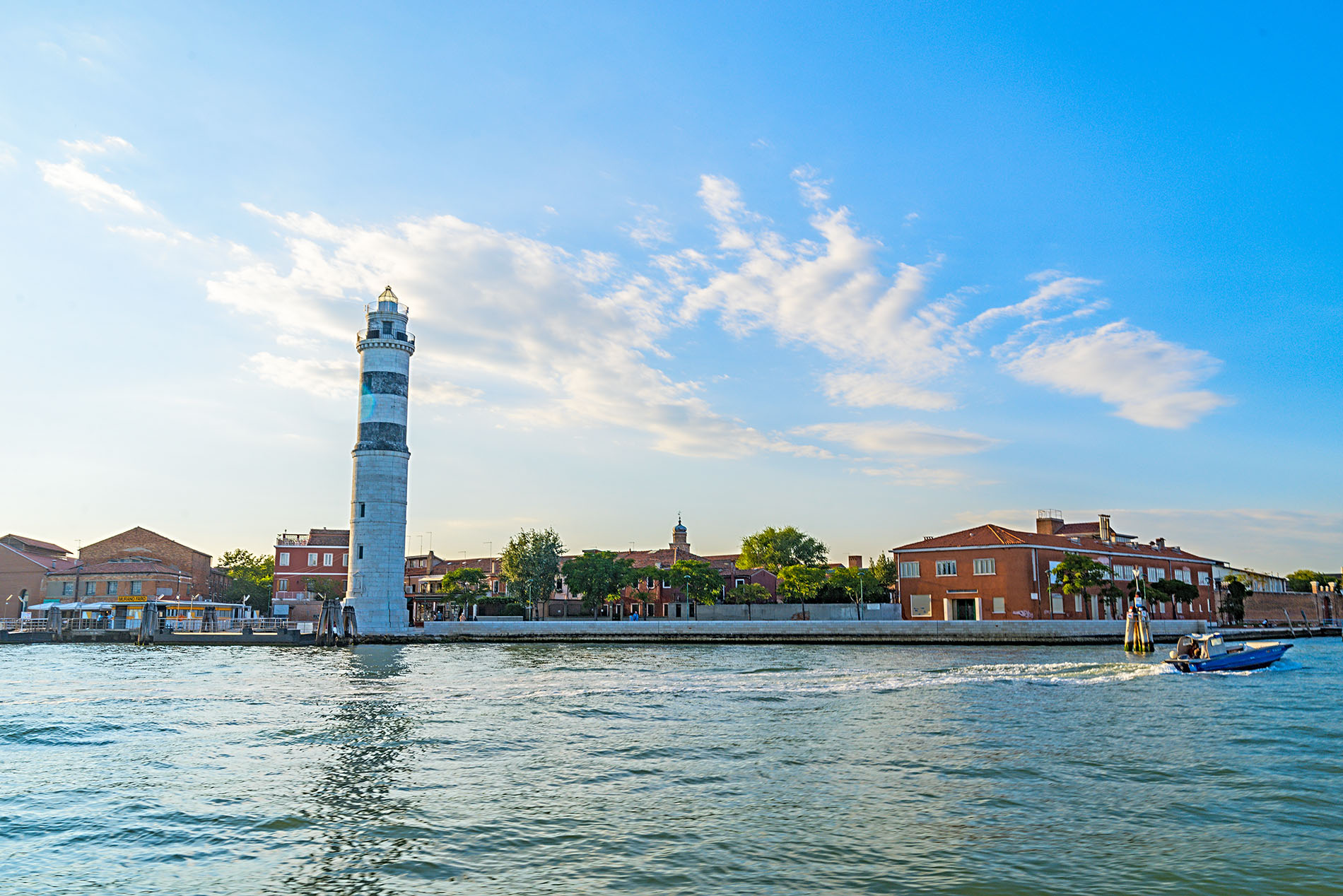Murano island and the secrets of glass-blowing art
All our experiences are included in the ticket!
Murano is famous across the world for its glass-blowing art that settled its base on the island back in 1291, when Serenissima opened all forges.
During this Murano experience you will take part to a free glass-blowing demonstration held by a master glassmaker in an active furnace and uncover the secrets of this centuries-old ancient art.
You can then continue with the itinerary and discover Murano’s iconic monuments and main attractions: the lighthouse that lights up St. Andrew’s Bocca (one of the 3 access point where the Adriatic sea enters and mixes with Venice lagoon), the Mula Palace, the marvellous churches of St. Peter martyr and Saints Maria and Donato and, of course, the Glass Museum.
Finally, search for the Lovers Streetlamps: if you find them, the legend says that you will be lucky in love for the whole year!
This itinerary has been created by Silvia Zanella for Venetiana.
Murano is famous across the world for its glass-blowing art that settled its base on the island back in 1291, when Serenissima opened all forges.
During this Murano experience you will take part to a free glass-blowing demonstration held by a master glassmaker in an active furnace and uncover the secrets of this centuries-old ancient art.
You can then continue with the itinerary and discover Murano’s iconic monuments and main attractions: the lighthouse that lights up St. Andrew’s Bocca (one of the 3 access point where the Adriatic sea enters and mixes with Venice lagoon), the Mula Palace, the marvellous churches of St. Peter martyr and Saints Maria and Donato and, of course, the Glass Museum.
Finally, search for the Lovers Streetlamps: if you find them, the legend says that you will be lucky in love for the whole year!
This itinerary has been created by Silvia Zanella for Venetiana.
Suggested itinerary:
Murano Lighthouse
Property of the Navy, Murano lighthouse in white Istrian stone dates back to 1934. Every 6 seconds its intermittent light illuminates Sant'Andrea harbor mouth, the main access to Venice Lagoon from the Adriatic Sea. A lighthouse in this part of the island has been documented for centuries: the previous models were similar to turrets, first made of wood and then of iron. The light was obtained by means of oil lamps and mirrors made by the island's glassmakers. The bas-relief at the base of the lighthouse represents a piety, to protect the tower, which guided the ships back to Venice in the night. The black stripes on the tower serve to make the lighthouse recognizable from afar in the fog.
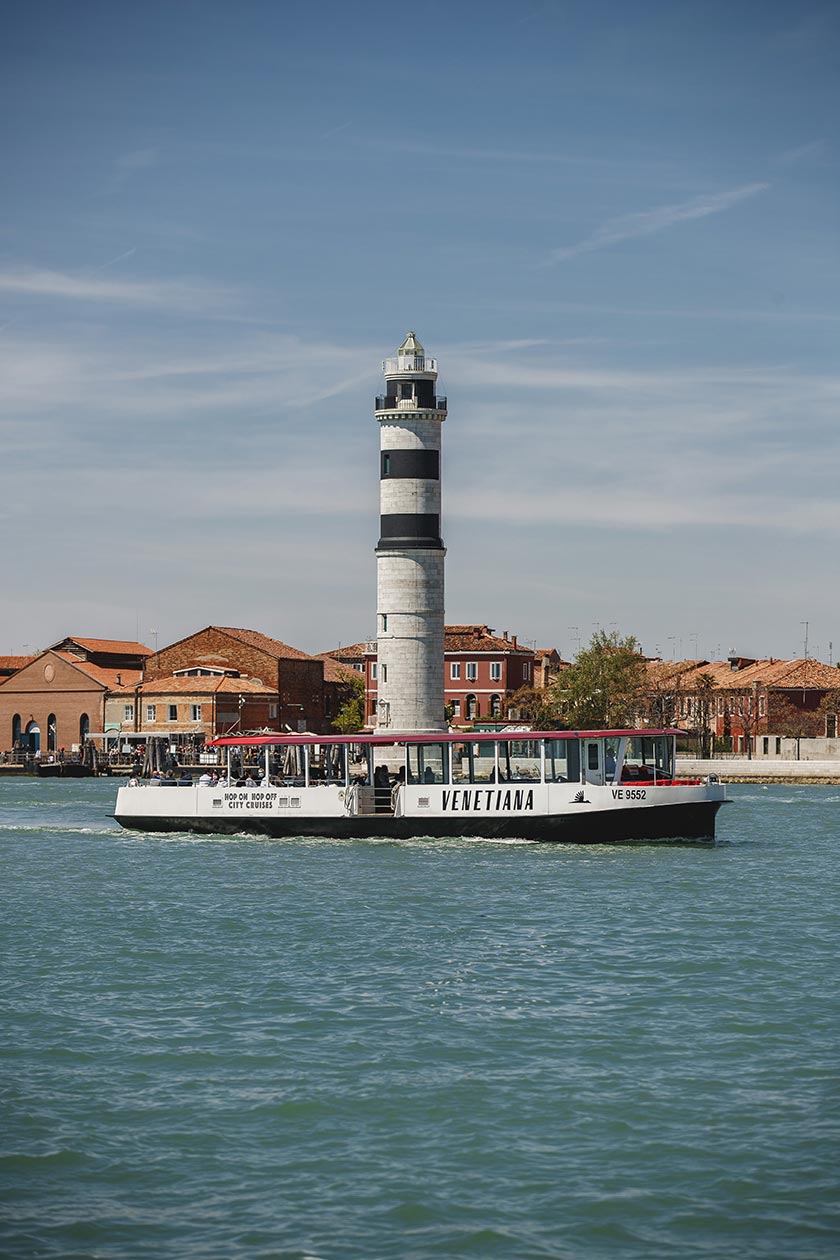
Campiello Santo Stefano
Religious life has always been flourishing in Murano. Among the oldest churches is the Church of Santo Stefano, dating back to the eleventh century, of which today only a small oratory remains. In 1374 this church was the subject of an interesting discovery: some relics of little martyrs, probably escaped from the massacre of King Herod in 7 BC, were found in the foundations. How these relics came from Bethlehem to Murano is still a mystery. Today the church also preserves a relic of Saint Luke the Evangelist and numerous valuable canvases.
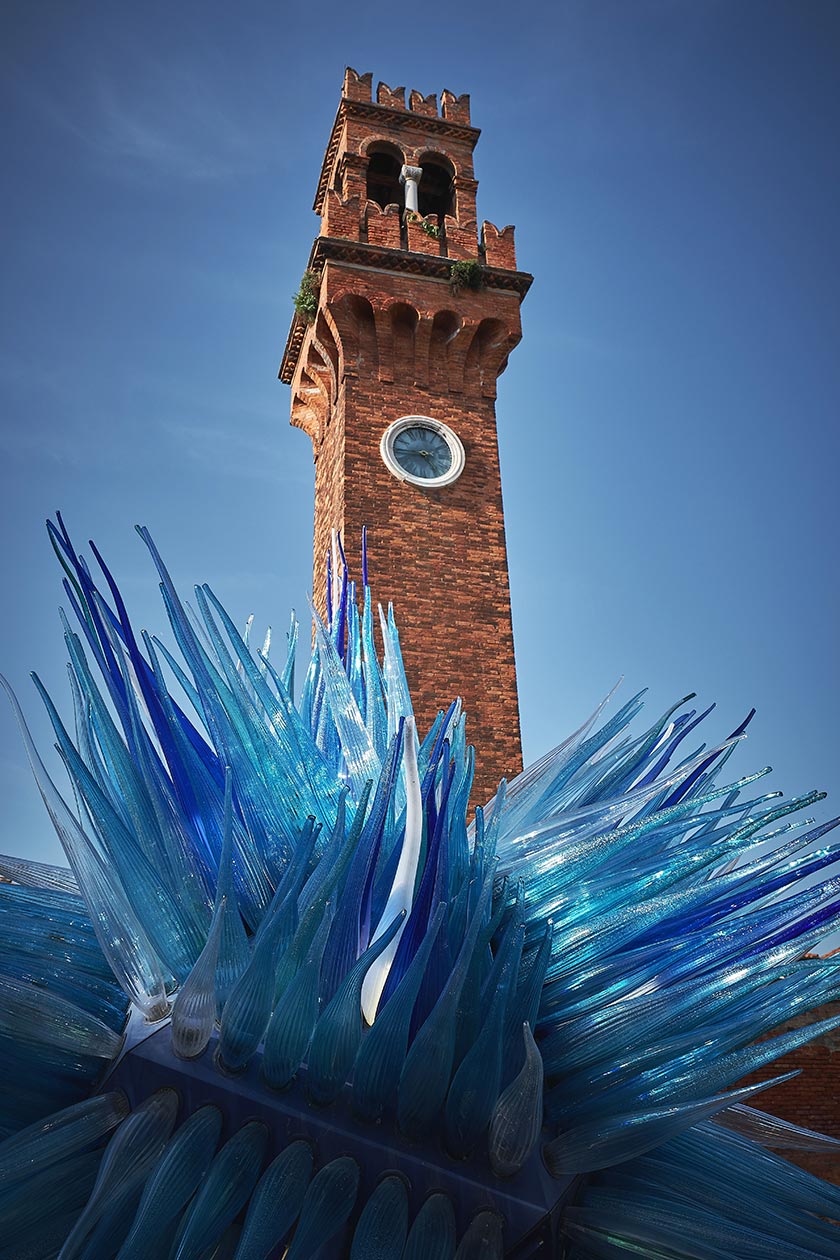
Church of San Pietro Martire
Beyond the bridge of Campiello Santo Stefano stands the magnificent Church of San Pietro Martire, built on the testament of the patrician Marco Michiel in 1348. The church today represents a real jewel in the exterior brick architecture, with Gothic and Renaissance hints. The works inside are also valuable, among which the "Pala Barbarigo" by Giovanni Bellini stands out. Other masterpieces preserved inside are the paintings by Jacopo Tintoretto, Palma il Giovane, Veronese, Salviati and Letterini.
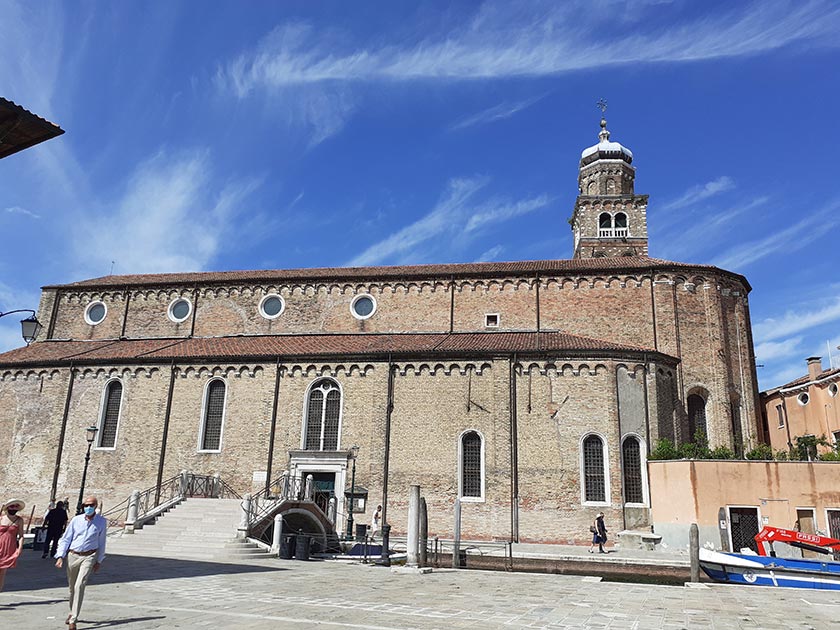
Da Mula Palace
Built in 1500, the elegant Palazzo Da Mula (Da Mula Palace) is one of Murano's jewels. It was the home of the Diedo family until 1621, the year in which Elena Diedo married the Senator of the Republic of the Serenissima Gerolamo Da Mula, changing its name. It was then sold to other families of the new aristocracy of glass masters and is now the municipal seat of the local branch of the Municipality of Venice, as well as a cultural center. Before returning to the boat we recommend a visit to a furnace to admire the skills of the glass masters at work.
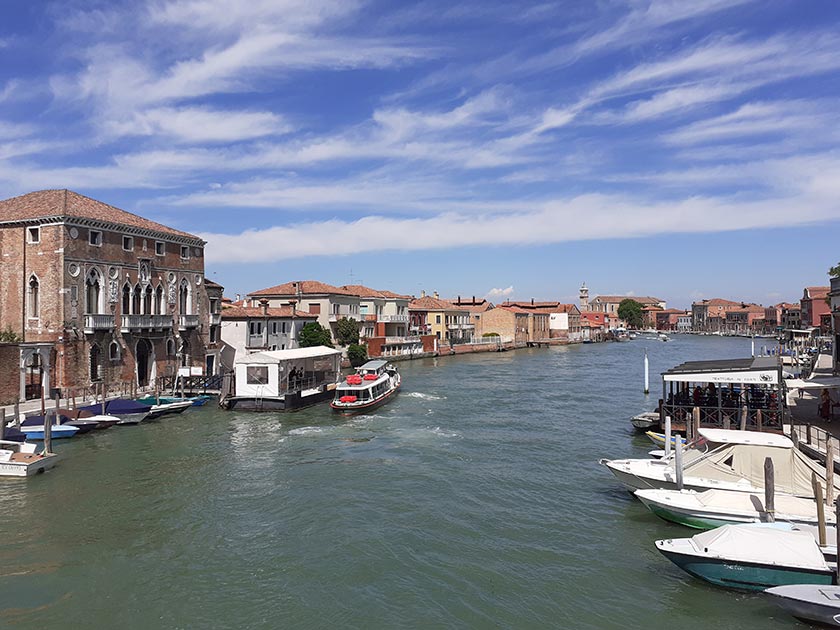
Ponte Lungo and Murano Grand Canal
Murano also has its Grand Canal, although it is not as famous as the one in Venice. The Ponte Lungo (Long Bridge) on the canal is a long iron bridge from whose top you can enjoy a beautiful 360 ° view of Murano and its bell towers. Palaces and patrician villas overlooked the Grand Canal of Murano, including that of Caterina Corner, queen of Cyprus. It was in fact believed that Murano furnaces made the air purer and for this reason many Venetian noble families owned second homes in Murano, right along this canal.
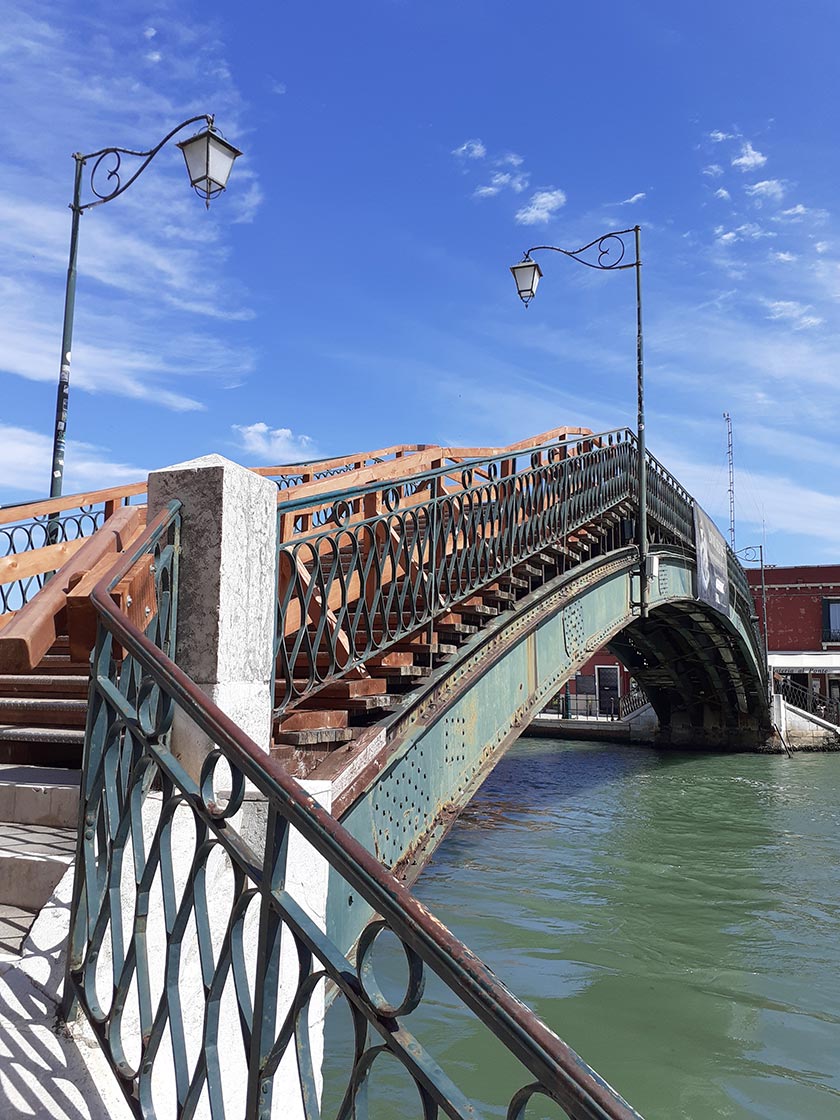
The former "Conterie" (now Hyatt Centro Hotel)
In the present site of a renowned hotel there was a building called "le conterie" in the last century. Le Conterie was Murano factory of colored beads obtained by the millimeter cut of a long and very thin Murano glass cane. These beads were called "conterie" and were a very precious product, for a long time exported all over the world. The production process of these beads was complex and required large spaces: for this reason, in 1800 the artisan families specialized in the production of "conterie" moved to this building. It is estimated that up to 1970 350 thousand quintals of beads were produced and still today the palace is among the most iconic of Murano.
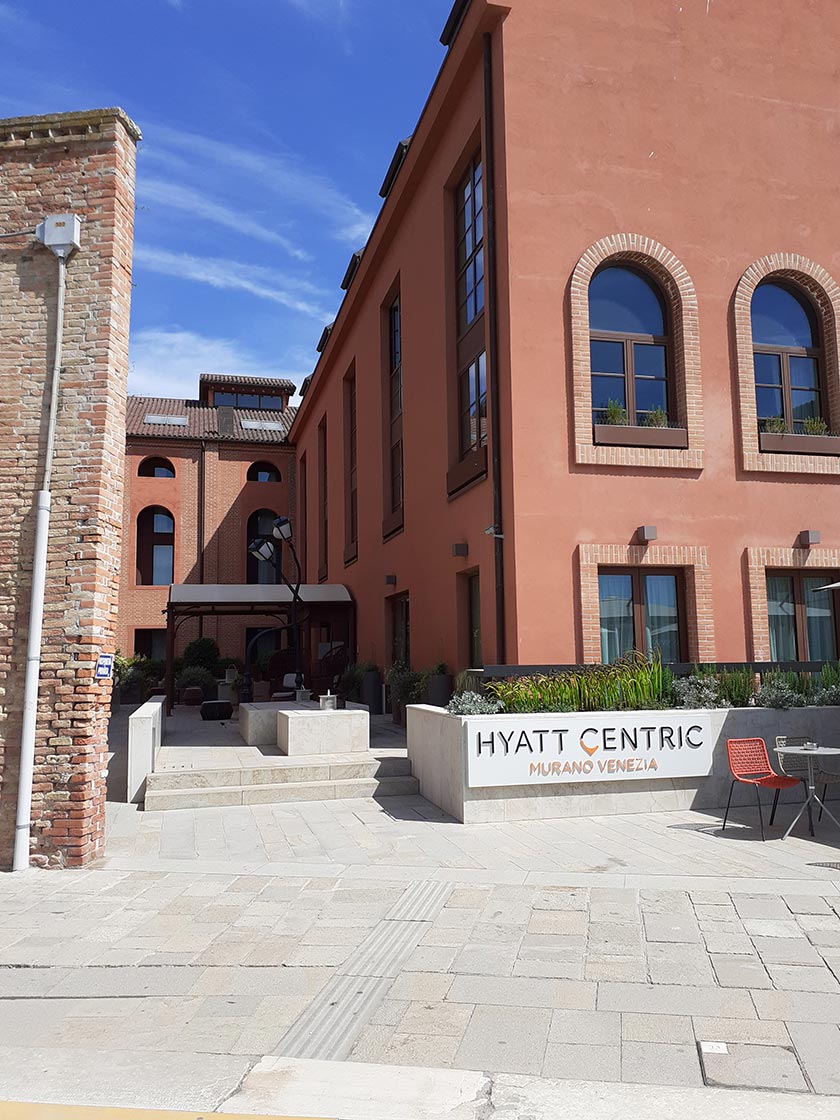
Hyatt Centro courtyard - The Lovers Streetlamps
In Murano there are two "lovers streetlamps". Legend has it that anyone who finds them in the labyrinth of streets and tiny squares will have luck in love for the whole year to come.

Glass Museum
Founded in 1861, the Glass Museum (Museo del Vetro) preserves the most complete collection in the world of Murano glass masterpieces from antiquity to today. Its opening was commissioned at the end of the nineteenth century by the abbot Zanetti. Initially the museum was a kind of school for glass masters; over the decades the museum was also the beneficiary of donations from private citizens, becoming the guardian of the island's millenary art.
Church of Santi Maria e Donato
Murano Cathedral, the Church of Santi Maria and Donato is a Byzantine-style brick structure, with magnificent decorations along the entire exterior of the apse. It was built in the seventh century and had an external baptistery that no longer exists. Dedicated to San Donato, patron saint of Murano, it is one of the most famous churches in the Venice Lagoon. Inside it hosts a floor mosaic in polychrome marble and an apsidal mosaic depicting the Madonna. Curious are also the ribs and the tooth exposed behind the main altar, which according to tradition belong to the dragon defeated by San Donato in Greece in the fourth century, actually belonging to a whale. Here is also the Bottazzo di Sant'Albano, a barrel that was said to produce endless wine, stolen from Burano according to a legend. Once brought to Murano it was walled up out of spite in the central nave of the Church of San Donato, where it can still be admired today.
